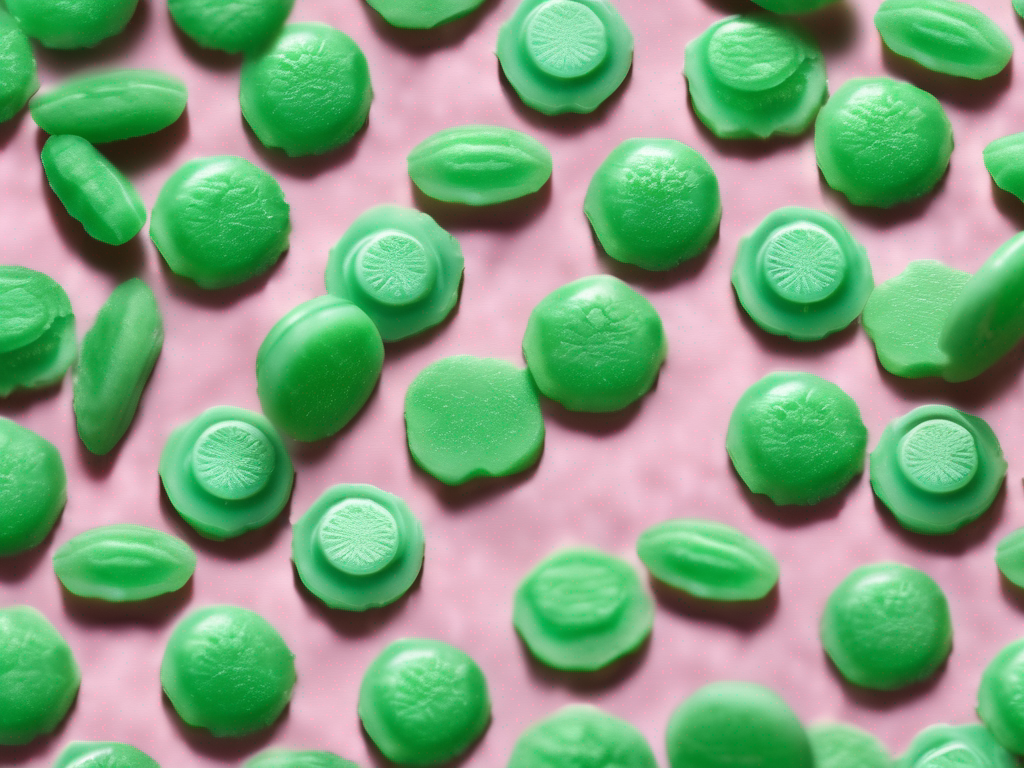
Is Your Mint Candy Still Fresh? How to Tell If Your Mints Mint Candy Has Gone Bad
Get Your Free Food Safety Cheat Sheet
30 most common foods with instant answers. Print it and stick it on your fridge—completely free!
Is Your Mint Candy Still Fresh? How to Tell If Your Mints Mint Candy Has Gone Bad
When it comes to indulging in sweet treats, mint candy is a popular choice for many. Whether you enjoy them as a breath freshener or a sweet pick-me-up, mints are a versatile and flavorful snack. However, like all food products, mint candy can go bad over time. In this blog post, we will explore how you can determine if your mints mint candy has gone bad, and provide you with practical tips on how to store them properly to ensure their freshness and safety. (Mints mint candy)
Understanding the Shelf Life of Mint Candy
Like most candies, mints have a relatively long shelf life due to their high sugar content and low moisture content. However, even though they can last for a long time, mints can still deteriorate in quality and flavor if not stored properly. Here are some key factors that can affect the shelf life of your mint candy:
Factors Affecting Shelf Life:
- Exposure to Moisture: Mints can absorb moisture from the environment, leading to a sticky and clumpy texture.
- Exposure to Air: Oxygen can cause mints to become stale and lose their crispness.
- Temperature Fluctuations: Extreme temperatures can cause mints to melt or become too hard.
- Light Exposure: Direct sunlight can cause the colors and flavors of mints to fade over time.
Signs Your Mints Mint Candy Has Gone Bad
To determine if your mint candy has gone bad, look out for the following signs:
Visual Inspection:
- Discoloration: If you notice any unusual discoloration or dark spots on the mints, it may indicate spoilage.
- Mold: Visible mold growth on the surface of the mints is a clear sign that they are no longer safe to consume.
- Cracks or Leaks: If the packaging of the mints is damaged, it can lead to contamination and spoilage.
Texture and Smell:
- Texture Changes: If the mints feel sticky, clumpy, or have an unusual texture, they may have gone bad.
- Off Odor: Spoiled mints may have a rancid or off-putting smell, indicating that they are no longer fresh.
Taste Test:
- Taste: If the mints taste stale, sour, or have an off-flavor, it is best to discard them.
Proper Storage Tips for Mint Candy
To ensure the longevity and freshness of your mint candy, follow these storage tips:
- Store in a Cool, Dry Place: Keep your mint candy away from heat sources and direct sunlight to prevent melting and flavor loss.
- Use Airtight Containers: Transfer your mints to airtight containers to protect them from moisture and air exposure.
- Avoid Humid Areas: High humidity can cause mints to become sticky and lose their texture.
- Check Expiry Date: Always check the expiration date on the packaging and consume the mints before they expire.
Conclusion
In conclusion, mints mint candy can last a long time if stored properly and consumed before they go bad. By understanding the signs of spoilage and following the storage tips mentioned in this blog post, you can enjoy your mint candy fresh and flavorful. Remember to inspect your mints regularly, trust your senses, and prioritize food safety when indulging in your favorite sweet treats.
For more information and tips on food safety and storage, visit [mints mint candy](/food/mints mint candy). Stay safe and enjoy your mints! (Mints mint candy)
Authoritative Food Safety References
These agencies and university labs inform every tip and health precaution we publish.
USDA FoodKeeper – Cold Storage Guidelines
Official refrigerator, freezer, and pantry timelines maintained by the U.S. Department of Agriculture.
Visit USDA FoodKeeperFDA Produce Safety Rule & Grower Guidance
Field-to-fridge handling practices that prevent contamination of fruits, vegetables, and leafy greens.
Visit FDA Produce SafetyCDC Foodborne Illness Prevention Hub
Surveillance-backed guidance on pathogens, symptoms, and steps to reduce foodborne illness risk.
Visit CDC Food SafetyUC Davis Postharvest Technology Center
University research detailing optimal storage atmospheres for produce after harvest.
Visit UC Davis PostharvestPenn State Extension – Home Food Preservation & Safety
Peer-reviewed extension bulletins on safe canning, chilling, and reheating practices.
Visit Penn State ExtensionGet Your Free Food Safety Cheat Sheet
30 most common foods with instant answers. Print it and stick it on your fridge—completely free! Want more? Upgrade to the complete guide with 70+ foods.
Scan your food directly and get instant safety info using our AI-powered camera feature.